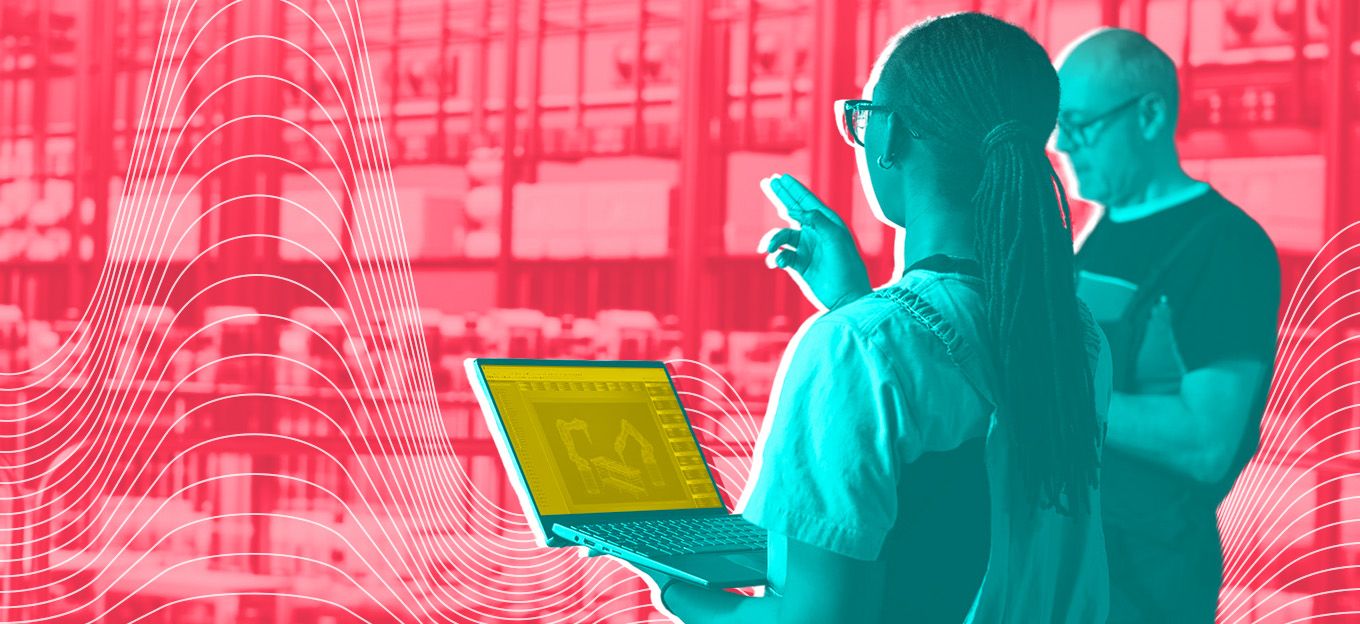Using IoT Sensors to Improve Productivity in Manufacturing
Using IoT Sensors to Improve Productivity in Manufacturing
- Last Updated: December 2, 2024
Datablaze
- Last Updated: December 2, 2024



The global IIoT market is estimated to reach $103.38 billion by 2026 as IoT devices are becoming more affordable and more manufacturers are investing in smart factory technology. One of the critical components of a smart factory is the sensors. IoT sensors are paramount for collecting essential information and sending data to the cloud for analysis in manufacturing. By analyzing data compiled from the sensors, businesses can create solutions that improve productivity, avoid costly unplanned downtime, and reduce the expense of manufacturing.
IoT Sensors
In IIoT (Industrial Internet of Things), sensors detect various types of external information and translate it into a signal or data that humans and machines can understand. The data is stored in a database managed within the building or in the cloud for processing and analysis. IoT sensors use various types of technology, such as optics, thermal and infrared, to capture the information needed. A sensor can also be designed to collect one or many different types of information. Some uses include measuring distance, levels, pressure, environment changes, or anomalies in production line batches.
'By analyzing data compiled from the sensors, businesses can create solutions that improve productivity, avoid costly unplanned downtime, and reduce the expense of manufacturing.' -Datablaze
Types of IoT Sensors
Vision Sensors
Images are captured by a camera and processed with the help of software to determine the presence, orientation, and accuracy of parts. The use of vision sensors can ensure product quality and consistency throughout batches. Vision sensors are commonly used on production lines for the food and beverage industry, automotive, and general manufacturing.
Proximity Sensors
These sensors can help measure the distance between two objects. This is often used in manufacturing, where machines need to know distances between products or measurements for assembly robots.
Pressure Sensors
Measuring the pressure of fluids or gases is common in industrial environments. Maintaining the correct pressure may be crucial for the product quality or safety of the crew.
Temperature Sensors
The temperature of components may indicate they are failing or overheating. This can give time for maintenance crews to replace worn-out parts before they cause an expensive mechanical failure. Temperature sensors can also help monitor the ambient temperature to ensure food safety or the quality of a product. Immediately being alerted of a cooler going over-regulated temperature can save the unplanned cost of food waste.
Humidity Sensors
The amount of moisture may be important for the product's final quality. Monitoring the moisture can ensure quality standards are always met. Humidity can also degrade some equipment; therefore, a sensor can help alert team members if humidity is out of range. Maintaining optimal humidity at all times can help prolong the life of sensitive equipment.
Level Sensors
Fluids or solids can be used to operate machinery or raw material in a product. Knowing when levels are low can ensure that hoppers are filled before they are entirely out, ensuring production time is never lost.
Acceleration and Vibration Sensors
Monitoring the movement of equipment can be important for the accuracy or maintenance of machinery. Excessive vibration could indicate worn-out bearings, loose bolts, or motors that are about to fail.
Sound Sensors
The pitch of some machinery may indicate whether it is operating efficiently or not. By monitoring the pitch, the maintenance crew can be alerted if a machine is too high or too low and in need of repair or maintenance.
As IIoT technology evolves, major industrial sensor manufacturers are designing "smart" sensors. These sensors are easier to implement than analog sensors that typically require PLCs to process and interpret data protocols. A smart sensor can often process data within the sensor and send it directly back to the managing platform. This makes the transmission of data more versatile and saves bandwidth by only sending the needed information.
IoT Sensor Connectivity
IIoT deployments can comprise just a few to thousands of sensors monitoring and controlling a single machine or an entire production line. To transmit data back to the network and cloud software, the sensors must be connected in some form. This connection will either be wired or wireless, and there are pros and cons of each form of connectivity.
Most manufacturing plants will hardwire their IoT devices using industrial Ethernet cables. Hardwiring can ensure a reliable connection, but there are limits to the distance between sensors, I/O blocks, and PLCs. There is also the risk of cables getting damaged and the expense of regularly replacing cables that flex on moving parts such as robotic arms.
Wireless IoT sensors are quickly gaining popularity as wireless technology improves and becomes more reliable. A Wireless Sensor Network (WSN) can have a much further distance between sensors and network equipment than network cables. Wireless connectivity is also much more scalable as the number of sensors in a deployment can be significantly higher. For example, a single private LTE network can wirelessly connect more than a thousand devices on a factory floor.
How Are Manufacturers Improving Productivity?
The solutions are practically endless when integrating sensors with an IoT management platform. Here are just a few examples of how IoT sensors play a role in helping manufacturers save costs and improve productivity.
Improve Product Quality
With machinery already connected to cloud platforms, storing data such as temperature and pressure is easier to track in production batches digitally. Machine vision through high-resolution cameras is another form of tracking products through a production line. Vision sensors, along with software, can help monitor product quality. This technology can significantly help reduce poor-quality products from reaching consumers who can jeopardize the brand.
Minimize Unplanned Downtime with Predictive Maintenance
Real-time data and cloud-based analytics can help engineers and maintenance crew spot inefficiencies with machinery. Unlike scheduled maintenance, programs can analyze data collected from sensors to determine if an unplanned breakdown is likely to occur. This reduces costs by allowing technicians to replace components before they fail, avoiding expensive repairs or injury to crew members.
Warehouse Management and Asset Tracking
Knowing the location of inventory and having an efficient method to move, stock, and pick inventory has always been a go-to route for improving productivity. In a smart warehouse, IIoT solutions use sensors to help track the flow of assets through the factory. Autonomous robots can move products or pick and pack orders without human interaction. By automating these simple tasks, employees can focus on other tasks that are more productive and require human insight.
Improve Procurement and Forecasting
For procurement managers, sensors installed on the production line can monitor the assembly of products, helping to control the usage of raw materials and reduce waste. They can also alert users when the supply is running low. Monitoring these critical items with sensors can significantly reduce waste and improve forecasting.
Product Development
Product development can be a costly process but is necessary for all manufacturers. Manufacturers can make better decisions before going into total production. By gathering data through sensors on the production floor and advanced manufacturing analytics, much of the R&D process can be simulated. Sensors on products can also be implemented to gather data in real-life scenarios. Collecting this data in real-time can help engineers make quick changes for a more efficient product.
Summary
There is no doubt that sensors play an essential role in daily operations throughout factories. The collection of data has proven to help businesses develop more efficient production lines, increase safety, and keep machines operating. Although the overall planning and implementation of IoT sensors in a manufacturing facility can be substantial, the return on investment can be well worth it.
The Most Comprehensive IoT Newsletter for Enterprises
Showcasing the highest-quality content, resources, news, and insights from the world of the Internet of Things. Subscribe to remain informed and up-to-date.
New Podcast Episode

Moving Past the Pilot Phase in IoT and AI
Related Articles





